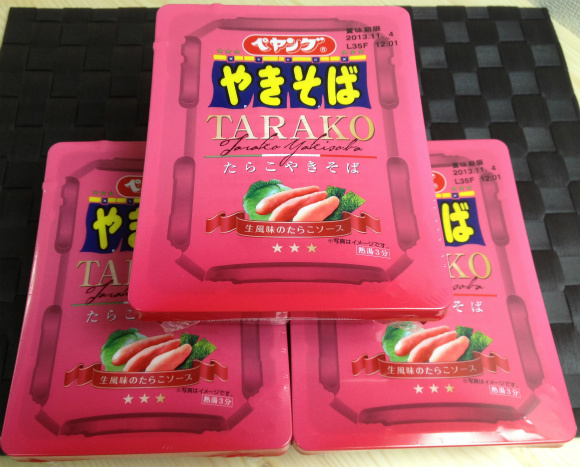
Instant ramen gets by far the most attention, but it’s not Japan’s only quick-fix noodle dish. Peyangu-brand instant yakisoba (stir-fried noodles) are available in just about any convenience store, and are an established hit with kids and adults alike.
Similarly, although the country is rightfully known for its scrumptious sashimi, Japanese cuisine also includes several varieties of tasty fish roe, including ikura (salmon roe) as seen at sushi restaurants and popular white rice topping mentaiko (spicy cod roe).
This month Peyangu instant yakisoba with tarako (plain cod roe) went on sale. Unable to pass up this convergence of our gourmet and lazy tendencies, we picked up a couple packs right away.
The first difference we noticed from the regular Peyangu yakisoba is the tarako version’s eye-searingly pink packaging, the same color as tarako, if several levels more intense.
Tarako can be eaten either raw or cooked, but raw is considered the best way to eat the high quality stuff. Peyangu claims the tarako sauce for their yakisoba is similar to the raw flavor, so even before we opened the package, we were expecting great things.
▼ The tarako sauce
▼ The full lineup of flavorings, including cabbage and thinly-sliced seaweed
We tore open the pack of cabbage and sprinkled it over the noodles, then filled the package with 500 ml (16.7 oz.) of hot water and waited three minutes for them to cook, although they’re ready to eat after two for those who prefer a firmer texture. After that, all you have to do is stir in the tarako sauce and top the whole thing with seaweed.
Things started off well. As we mixed in the sauce, the steam still rising off the noodles carried a mouth-watering aroma to our nostrils. But as anyone who’s eaten a fancy scented-soap from their hotel room after one too many minibar whiskies can tell you, a pleasing fragrance doesn’t always make for a satisfying meal.
As soon as the tarako yakisoba hit out taste buds, we were filled with a soul-crushing disappointment. If you take a look at the dish in its finished state, it’s literally easy to see why. There’s simply not enough tarako sauce to even noticeably change the color of the noodles, much less give them any real flavor.
▼ Hmm…shouldn’t it be a little more pink?
▼ Maybe we just need to go in for a closer look?
▼ Nothing yet…
▼ That’s all?!
In the best yakisoba, all of the ingredients work together as a team, and the sauce is supposed to be the leader of that team that ties all of the flavors together as a harmonious whole. What we have here is Lord of the Flies-style anarchy. Each of the components are off doing their own thing, regardless of how that brings the collective taste down several notches. Without a proper amount of sauce, none of the flavors synch up.
If anyone from Peyangu happens to be reading this article, we’d like to offer a few suggestions on how to improve the product, any one of which would be sufficient.
1. Double the amount of tarako sauce.
2. Package the product with 100 percent more tarako sauce
3. Increase the amount of tarako sauce to two times the current volume
Giving us a bittersweet glimpse of what might have been, what little sauce there is actually tastes really good. It’s honestly a crying shame there’s not more of it, but maybe our tears will add some salt to the noodles and finally give them some flavor.
▼ By the way, we could use more tarako!
Photos: RocketNews24
[ Read in Japanese ]

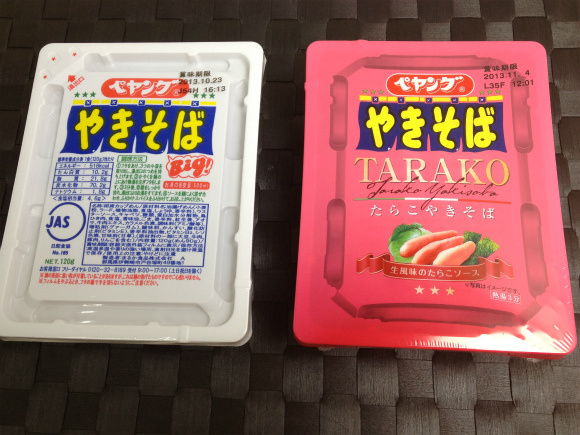
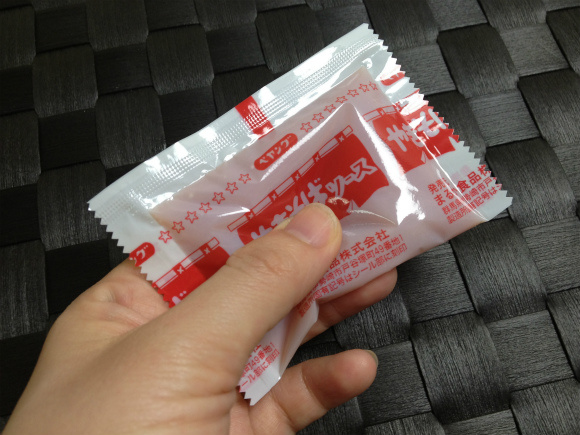
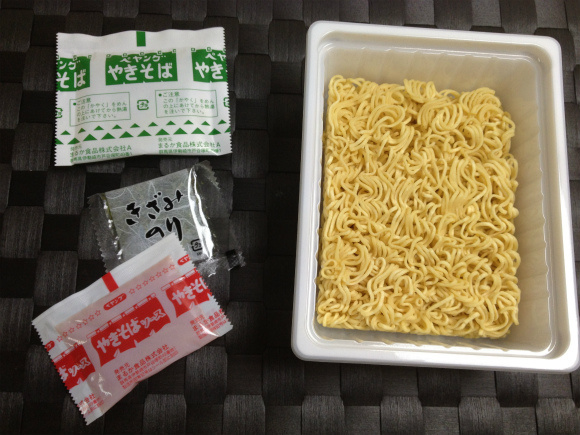
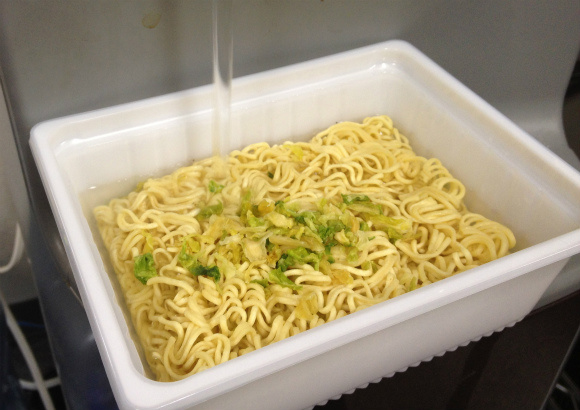
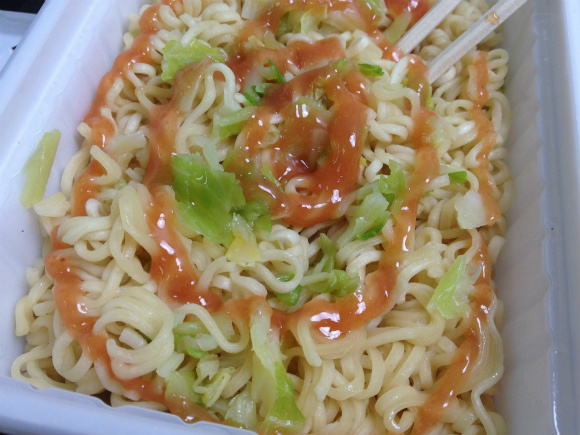
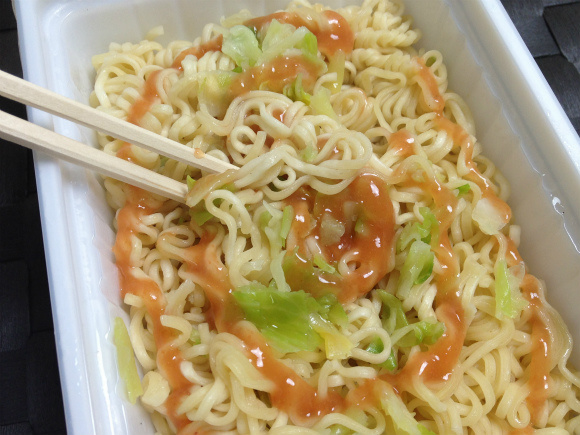
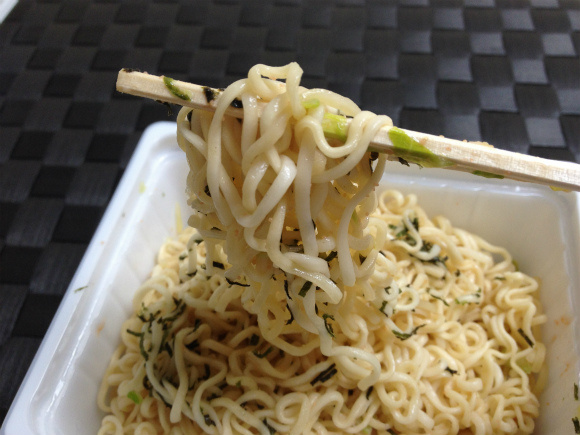
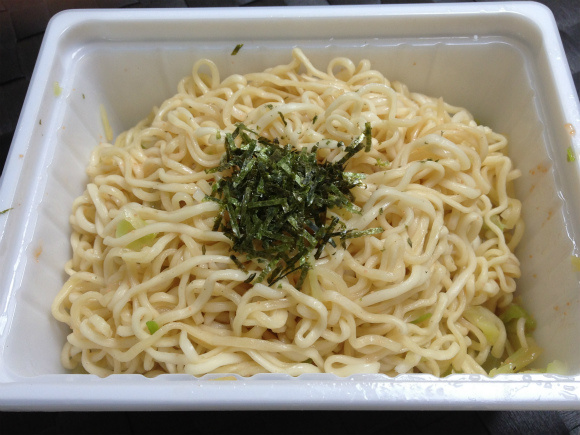
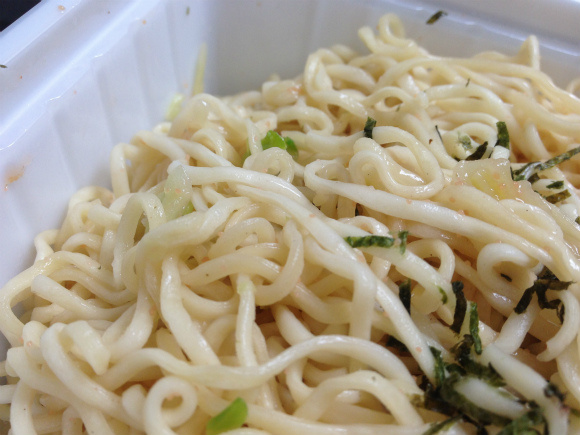
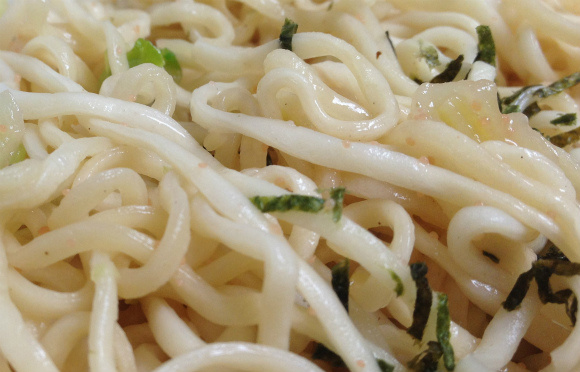
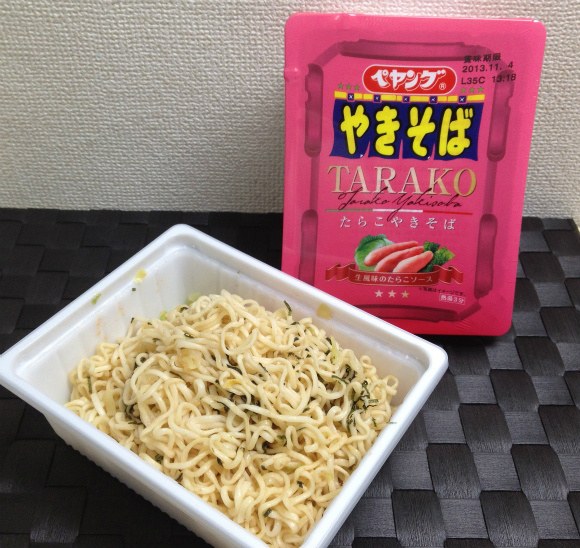
 Tokyo’s spicy cod roe ice cream: An unexpected dessert that tastes about like what you’d expect
Tokyo’s spicy cod roe ice cream: An unexpected dessert that tastes about like what you’d expect One minute is all you need to make this popular instant noodle meal from Okayama【SoraKitchen】
One minute is all you need to make this popular instant noodle meal from Okayama【SoraKitchen】 Taste the beginning of the end for Japanese Ritz: Wasabi & Cheddar / Tarako & Cream Cheese
Taste the beginning of the end for Japanese Ritz: Wasabi & Cheddar / Tarako & Cream Cheese We try cooking yakisoba with real Japanese buckwheat soba【SoraKitchen】
We try cooking yakisoba with real Japanese buckwheat soba【SoraKitchen】 Brace yourself – Chocolate-flavored instant noodles are coming to Japan!
Brace yourself – Chocolate-flavored instant noodles are coming to Japan! Japanese ramen restaurants under pressure from new yen banknotes
Japanese ramen restaurants under pressure from new yen banknotes Red light district sushi restaurant in Tokyo shows us just how wrong we were about it
Red light district sushi restaurant in Tokyo shows us just how wrong we were about it McDonald’s new Happy Meals offer up cute and practical Sanrio lifestyle goods
McDonald’s new Happy Meals offer up cute and practical Sanrio lifestyle goods Beautiful Red and Blue Star luxury trains set to be Japan’s new Hokkaido travel stars
Beautiful Red and Blue Star luxury trains set to be Japan’s new Hokkaido travel stars Tokyo Tsukiji fish market site to be redeveloped with 50,000-seat stadium, hotel, shopping center
Tokyo Tsukiji fish market site to be redeveloped with 50,000-seat stadium, hotel, shopping center Mt. Koya planning to instate visitor’s tax to cope with huge tourist numbers
Mt. Koya planning to instate visitor’s tax to cope with huge tourist numbers New private rooms on Tokaido Shinkansen change the way we travel from Tokyo to Kyoto
New private rooms on Tokaido Shinkansen change the way we travel from Tokyo to Kyoto Sakura tree falls on man at Sannenzaka near Kiyomizu temple in Kyoto 【Breaking News】
Sakura tree falls on man at Sannenzaka near Kiyomizu temple in Kyoto 【Breaking News】 Japanese company starts project to restore Nakagin Capsules to capsule hotel
Japanese company starts project to restore Nakagin Capsules to capsule hotel Pokémon Sleep camping suite and guestrooms coming to Tokyo Hyatt along with giant Snorlax burgers
Pokémon Sleep camping suite and guestrooms coming to Tokyo Hyatt along with giant Snorlax burgers All-you-can-drink Starbucks and amazing views part of Tokyo’s new 170 meter-high sky lounge
All-you-can-drink Starbucks and amazing views part of Tokyo’s new 170 meter-high sky lounge More foreign tourists than ever before in history visited Japan last month
More foreign tourists than ever before in history visited Japan last month Starbucks reopens at Shibuya Scramble Crossing with new look and design concept
Starbucks reopens at Shibuya Scramble Crossing with new look and design concept Studio Ghibli releases new action figures featuring Nausicaä of the Valley of the Wind characters
Studio Ghibli releases new action figures featuring Nausicaä of the Valley of the Wind characters French Fries Bread in Tokyo’s Shibuya becomes a hit on social media
French Fries Bread in Tokyo’s Shibuya becomes a hit on social media Studio Ghibli glasses cases let anime characters keep an eye on your spectacles
Studio Ghibli glasses cases let anime characters keep an eye on your spectacles Is the new Shinkansen Train Desk ticket worth it?
Is the new Shinkansen Train Desk ticket worth it? Beautiful Ghibli sealing wax kits let you create accessories and elegant letter decorations【Pics】
Beautiful Ghibli sealing wax kits let you create accessories and elegant letter decorations【Pics】 Studio Ghibli releases Kiki’s Delivery Service chocolate cake pouches in Japan
Studio Ghibli releases Kiki’s Delivery Service chocolate cake pouches in Japan New definition of “Japanese whiskey” goes into effect to prevent fakes from fooling overseas buyers
New definition of “Japanese whiskey” goes into effect to prevent fakes from fooling overseas buyers Our Japanese reporter visits Costco in the U.S., finds super American and very Japanese things
Our Japanese reporter visits Costco in the U.S., finds super American and very Japanese things Studio Ghibli unveils Mother’s Day gift set that captures the love in My Neighbour Totoro
Studio Ghibli unveils Mother’s Day gift set that captures the love in My Neighbour Totoro Domino’s Japan now sells…pizza ears?
Domino’s Japan now sells…pizza ears? New Japanese KitKat flavour stars Sanrio characters, including Hello Kitty
New Japanese KitKat flavour stars Sanrio characters, including Hello Kitty New Pokémon cakes let you eat your way through Pikachu and all the Eevee evolutions
New Pokémon cakes let you eat your way through Pikachu and all the Eevee evolutions Sales of Japan’s most convenient train ticket/shopping payment cards suspended indefinitely
Sales of Japan’s most convenient train ticket/shopping payment cards suspended indefinitely Sold-out Studio Ghibli desktop humidifiers are back so Totoro can help you through the dry season
Sold-out Studio Ghibli desktop humidifiers are back so Totoro can help you through the dry season Japanese government to make first change to romanization spelling rules since the 1950s
Japanese government to make first change to romanization spelling rules since the 1950s Ghibli founders Toshio Suzuki and Hayao Miyazaki contribute to Japanese whisky Totoro label design
Ghibli founders Toshio Suzuki and Hayao Miyazaki contribute to Japanese whisky Totoro label design Doraemon found buried at sea as scene from 1993 anime becomes real life【Photos】
Doraemon found buried at sea as scene from 1993 anime becomes real life【Photos】 Tokyo’s most famous Starbucks is closed
Tokyo’s most famous Starbucks is closed One Piece characters’ nationalities revealed, but fans have mixed opinions
One Piece characters’ nationalities revealed, but fans have mixed opinions We asked a Uniqlo employee what four things we should buy and their suggestions didn’t disappoint
We asked a Uniqlo employee what four things we should buy and their suggestions didn’t disappoint Princesses, fruits, and blacksmiths: Study reveals the 30 most unusual family names in Japan
Princesses, fruits, and blacksmiths: Study reveals the 30 most unusual family names in Japan Regular cup noodle bowls not enough for you? Try this 2000+ calorie instant yakisoba instead!
Regular cup noodle bowls not enough for you? Try this 2000+ calorie instant yakisoba instead! We make yakisoba hot sandwiches, the next trendy camping meal【SoraKitchen】
We make yakisoba hot sandwiches, the next trendy camping meal【SoraKitchen】 Introducing sweet kitsune udon for your eating pleasure…probably
Introducing sweet kitsune udon for your eating pleasure…probably Don’t forget that the best convenience store in northern Japan has branches farther south too
Don’t forget that the best convenience store in northern Japan has branches farther south too How to make your own Pringles-flavor instant noodles【SoraKitchen】
How to make your own Pringles-flavor instant noodles【SoraKitchen】 We try European Cup Noodle Soba flavors to see which ones come out on top 【Taste test】
We try European Cup Noodle Soba flavors to see which ones come out on top 【Taste test】 Japan super budget dining – What’s the best way to spend 1,000 yen at sushi restaurant Sushiro?
Japan super budget dining – What’s the best way to spend 1,000 yen at sushi restaurant Sushiro? Never waste time arguing about what to eat for dinner again with Japan’s Six Noodle Dice【Photos】
Never waste time arguing about what to eat for dinner again with Japan’s Six Noodle Dice【Photos】 Gamer-friendly, non-instant yakisoba you can eat with your fingers【Sora Kitchen】
Gamer-friendly, non-instant yakisoba you can eat with your fingers【Sora Kitchen】 The new mustard mayo black pepper yakisoba “Demon King” flavor is here to terrorize tongues
The new mustard mayo black pepper yakisoba “Demon King” flavor is here to terrorize tongues Make your best-tasting onigiri taste even better with this easy recipe! 【RocketKitchen】
Make your best-tasting onigiri taste even better with this easy recipe! 【RocketKitchen】 Instant noodle company combines yakisoba noodles with fermented natto bean topping
Instant noodle company combines yakisoba noodles with fermented natto bean topping We tried super spicy wasabi ramen and yakisoba that’s rumored to make anyone cry【Taste Test】
We tried super spicy wasabi ramen and yakisoba that’s rumored to make anyone cry【Taste Test】 Gold-dust topped instant noodles on sale in Japan for the end of Heisei Era
Gold-dust topped instant noodles on sale in Japan for the end of Heisei Era We venture out of our comfort zone with fried chicken and hamburger-flavored instant noodles
We venture out of our comfort zone with fried chicken and hamburger-flavored instant noodles We get to be (probably) the first ever to try Nissin Cup Noodle’s latest creation: Gyoza ramen!
We get to be (probably) the first ever to try Nissin Cup Noodle’s latest creation: Gyoza ramen!
Leave a Reply